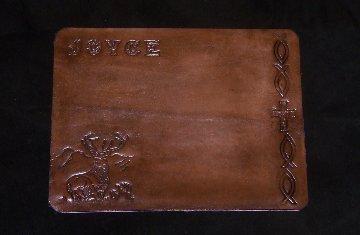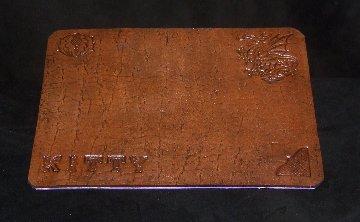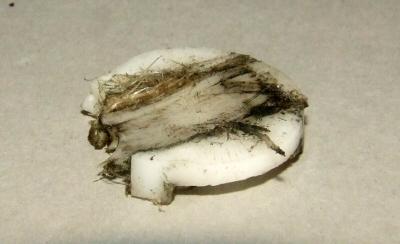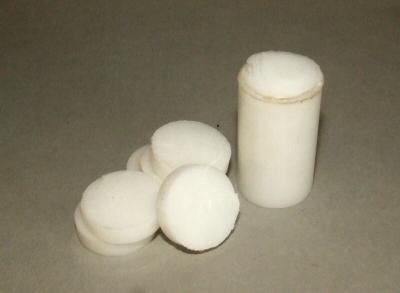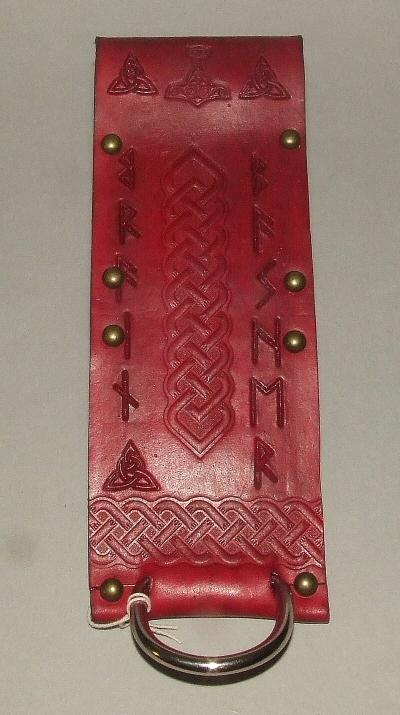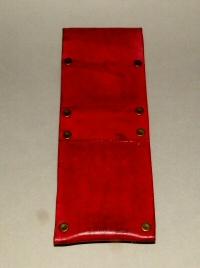-
Posts
5,931 -
Joined
Content Type
Profiles
Forums
Events
Blogs
Gallery
Everything posted by fredk
-
Try here; https://buyleatheronline.com/en/home/27-7183-pebble-printed-cowhide-upholstery-leather.html#/51-color-dark_blue/372-average_size_of_the_piece-2_m_22_ft_half_piece
-
I'd like to see a photo too. All I got on that link was a load of waffle
-

Dyed leather is returning to original color??!!
fredk replied to AmericanSon's topic in How Do I Do That?
Alcohol based can still be thinned and washed out with water I simply give the chrome tan a good wetting and washing with the cellulose thinners and whilst its still damp I dye it -
It looks a lot like a leather I got from Le Prevo a lot of years ago, but my hide was thicker at 5mm/6mm If you can, send a small piece to Le Prevo and ask if they can identify it and/or supply it
-

Dyed leather is returning to original color??!!
fredk replied to AmericanSon's topic in How Do I Do That?
That thar is a clooo. Chrome tanned, in my experience wont take a dye and keep it unless it has been treated beforehand. I use cellulose thinners to prepare chrome tan. Also you are using a water-based dye. I use an oil -based dye on chrome tan -
Obviously we have a much smaller country. We have 1st class, 2nd class and Parcel for sending parcels, depending on weight, as well independent couriers. Couriers take longer to deliver and are used only for certain things. Basically, 1st takes one to two days, 2nd takes three to four days, Parcel takes one to four days and couriers take two to five days, last two, depends how much you've paid. And, I believe, we pay a lot less than other countries. Parcels sent overseas. recently I sent a large parcel to the USA, it arrived on the 4th day after posting. Well before ETA. A small parcel to France arrived on the 2nd day after posting I've bought leather from that place in Italy. They quoted 7 to 10 days for delivery. I received it on the third day after it was sent afair, the order from Tandy was about a year ago. That was the last one, I've ordered a few times and the results have been the same. It came by FedEx. But FedEx don't operate here, it is handed over to a 'partner' courier. I was able to track the shipment all the way, but the info was a few hours behind cos it said the parcel was at my local depot as the driver was handing it over to me afair It was picked up from Tandy at about 17.45 (local time) Wednesday by FedEx, arrived at a FedEx depot at a London airport about 08.30 (local time) Thursday, arrived in Belfast airport about 11.30 Thursday, picked up by the couriers and taken to their depot for customs checking and consigned for delivery on Saturday morning
-
to ensure my finger nails are cut short and filed smooth before putting on rubber/latex gloves for dyeing. I was lucky today. A long broken thumb nail poked a hole in a glove but it wasn't touched much by the dyeing sponge so only a little black dye got through What have you learnt today at the leather-worker university?
-
Enjoying reading this thread Spare a thought for us My closest Tandy is in Texas, about 3,500 miles / 12 hours flying - one way Actually, last time I bought leather from Tandy HQ, shipping was reasonable, less than from other parts of the UK, taxes were paid by Tandy and delivery took 6 days. It would have taken 3 but we had a 'bank holiday' weekend which took up three days, no work or deliveries done. But I agree; you need to choose the leather yourself but I've become used to taking the chance of what is picked out for me, only once I got rubbish (from a Tandy shop in England)
-
This reminds me I have a pair of #1 son's shoes to repair. They are/were expensive Italian. I took them round the local 'shoe repairers', not one would or could do anything with them. There are absolutely no cobblers left. All these guys could do is stick rubber soles on them Although I made medieval shoes about 20 years ago it looks like a new talent I'll have to learn to repair this one pair
-
I had a similar but different experience many years ago. Had to cancel my credit card to ensure the van rental company could not get payment
-
I made a couple of mouse-mats. Strictly for use by meeces. afair, 2.5 -28 mm veg tan, stamped, dyed and sealed and then backed with 3 mm neoprene rubber They can't be used for putting coffee/tea cups on as they get marked
-
Well, I showed the hanger to the chap and he has asked for at lease 3 more, in red, black and brown leather, to see what sells. And at least 2 sword hangars
-
Try quality wicks for candle making. Not the pre-waxed type though
-
Like this one Under the lever is small nylon/plastic disc that sits on the top of the ram, to take the wear of the lever on the ram. This disc wears out. Tandy does not tell you about it nor do they supply replacements A few years ago I discovered this. The pressure pad on my press was badly worn, any more use of it and it would have been worn right through. I changed the pad again this morning. This is what the old one looks like; As I discovered years ago I could not buy replacements and inquires to Tandy resulted in nil response The pad is 25 mm / 1 inch diameter and only about 5 mm thick. I bought a bar of Delrin 25 mm diameter and 100 mm long, the shortest I could buy, and on a borrowed band-saw I cut a few discs. As you can see in the above photo a small section on the same side but on opposite edges needs cutting away for the locating lugs I have 6 discs, I've used 2 and there is plenty of the bar left. Should last a long time and keep my press in action for some time Total cost was £5.98 (about $7.50) for the Delrin bar If you use a Tandy Pro Hand Press check out the state of the pad. You only need remove one bolt to remove the lever
-
A proper wick has a weave to it. It burns better if its the right way up. Try reversing the wick and keep it trimmed close so only a few mm are above the holder to burn. You actually do not want the wick burning but the alcohol vapours
-
A KAM snap would do the job To hide the female part of this regular snap you would need to cut around it, before installing it, on the strap, removing some leather, shortening the post on it then fitting it
-
Oops, I shudda said, its a 'viking' axe* hanger. For hanging a single or double handed light axe on a belt. The runes are 3/4 inch Rune stamps by Ivan. Tandy sometimes does an exactly same set. The vikings liked to give their weapons and shields fearsome names. This spells out 'BRAIN BASHER' Any others I might do will have different names The long Celtic lace pattern is a stamping plate. One of two I bought from a maker in Russia. Its clear acrylic. The Mjolnir is a Tandy 3D stamp and the small Celtic lace triangles is a brass stamp I had made. A 40 mm i/d welded steel D loop. Its about 22 cm long x 8 cm wide. 2 mm veg tan, folded over to make a belt loop and double the thickness for carrying the axe. All glued together with just a few rivets. I made it from a piece of 'scrap' I had available * you can leave off the e for US spelling
-
I made this the other day. Its just a try-out. A couple of mistakes on it to be corrected on the next, if the buyer wants more I had to put a re-enforcement piece on the back. This was tending to fold where the two folded-over parts met
-
Here in N.I. Barry's is fun-fair types place where people go to have exciting fun I guess you going into your Barry's was much the same
-
I have the stylus type version. It has different 'hair' effect on each end. I find it very convenient. Easily switching between the two ends
-
I'll revise my earlier statement; With a fresh battery heat-up was instant and the tip went red hot. Perhaps its hot enuff to melt solder. The unit comes with a protective cover which covers the tip and the switch as well and prevents it being accidentally pressed
-
I just checked the battery I used to check that the zapper is working; its only about 75%, not full strength. That will make a difference to the time to heat and the heat
-
I just bought one. The tip takes about 5 second to heat up but it really never gets as hot as a soldering iron, just hot enuff to melt the thread. Its light-weight and handy. I intend to try it on my model aeroplanes as well, for trimming the rigging



